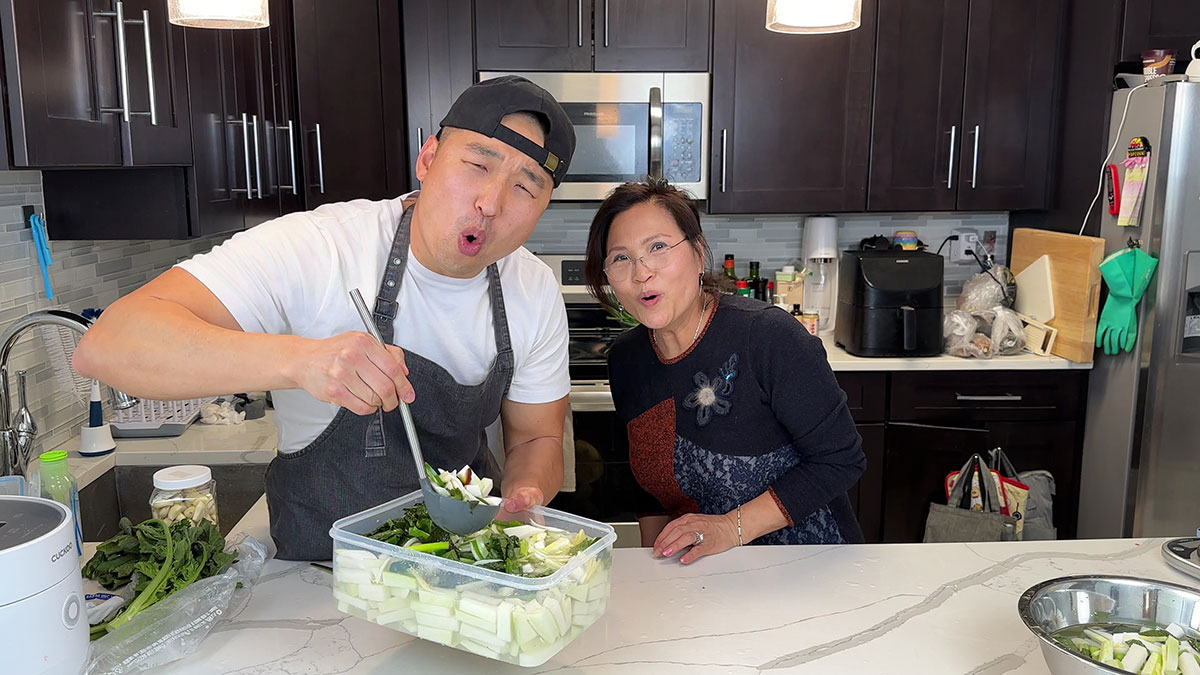
Dongchimi or Water Kimchi is a type of Kimchi made with radish submerged in a water-based brine.
This recipe is also known as Winter Kimchi because the harvest for Mu or Korean Radish and other crops is right around late fall. With the plentiful produce comes “gimjang” or kimchi-making season. Sweet vegetables on their peak are fermented to be preserved throughout the winter season.
Korean elders have been very creative in making sure that there are no veggies left behind. What’s more, is that they were able to make healthy produce even healthier!
Why make Water Kimchi?
This is one of my highly requested recipes mainly because…
- It is not spicy compared to the classic Napa Cabbage Kimchi.
- It does not contain any fish sauce or shrimp paste which is a major allergen for a lot of people.
- It is easy to make and can last a really long time when stored in the fridge!
The biggest struggle in doing this recipe is that Asians don’t really measure when cooking. However, we wanted to share this with everyone, so my mom did her best to prepare and figure out the measurements for you guys!
What is Korean Radish?
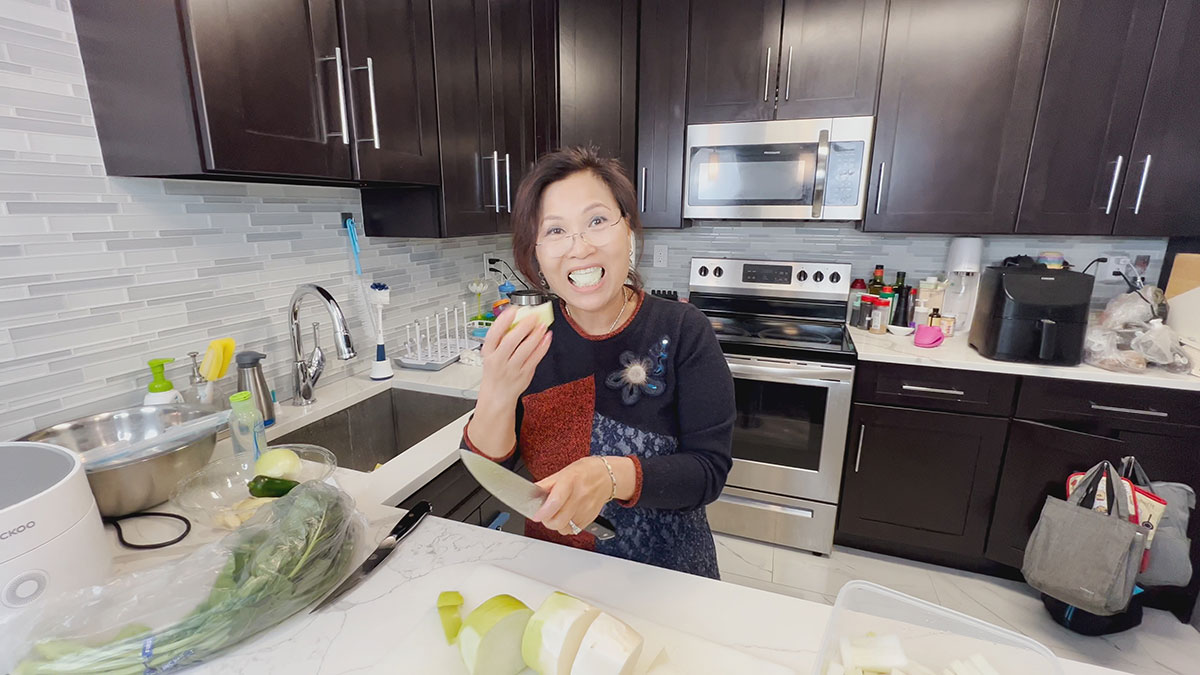
Korean radish or Mu is the star of this recipe. Appearance-wise, it is an oblong-shaped radish that is white at the bottom and green right around the top. I usually find one in Hmart! It’s firm and crisp when chopped, but it can be eaten raw or after it is fermented.
Mu is good for the gut so aside from preserving them, we also use this in many of our soups like the Hangover Soup, Beef and Radish Soup, and Soybean Paste Stew. It gives a super refreshing taste to the broth that many Koreans love to drink for comfort and healing.
How to make Radish Water Kimchi?
Disclaimer: I get a small commission at no additional cost to you when you make a qualified purchase under the affiliate links.
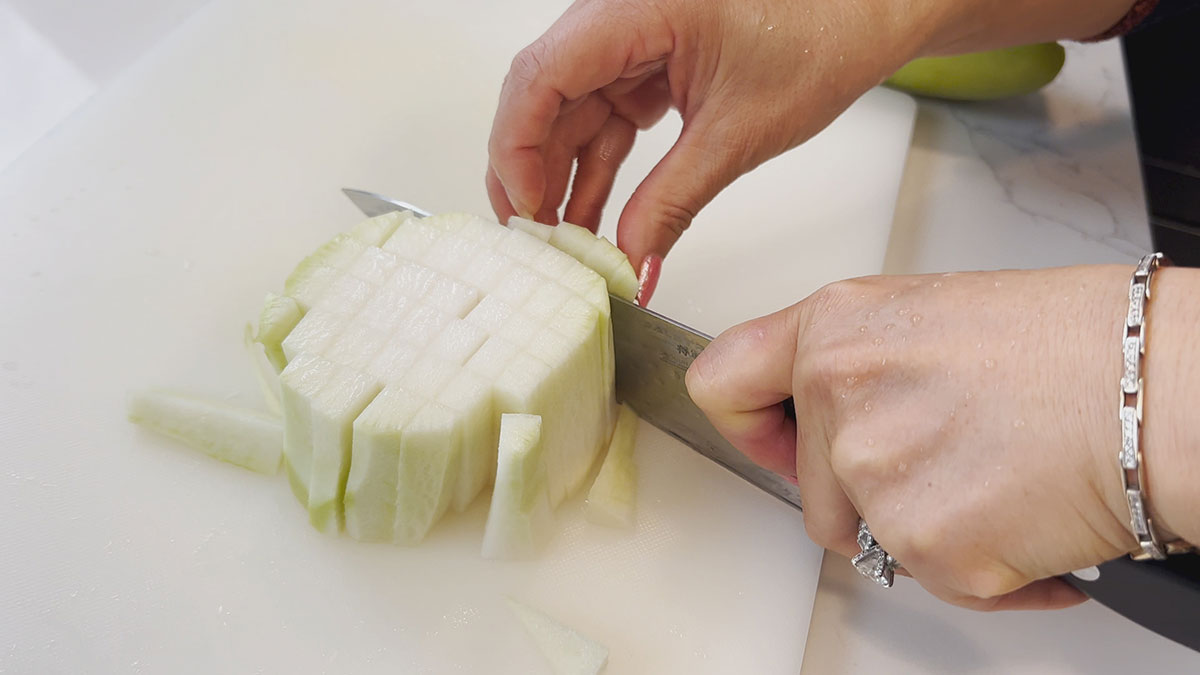
To prepare, remove the roots and roughly peel the skin so they can be eaten as well. Typically, you can slice this in thick disc pieces, but to ferment it faster, my mom chopped it into thick matchstick pieces.
In making any kimchi, sea salt is essential. It does a great job of drawing out the moisture and the natural taste of the vegetable. It also makes the radish a bit softer while keeping it crisp.
TIP: Do not use iodized salt as a replacement, rather use kosher salt. Also, no need to wash the radish after salting.
Aside from mu, you can also add napa cabbage (needs to be salted) and mustard leaves (does not need to be salted) to have a variety of vegetables fermented~
Simple Water-based Brine
For the brine, it is a simple combination of water, sea salt, and new sugar. New sugar is a type of sweetener that only requires a very small amount and can already give a sweet taste to balance the brine.
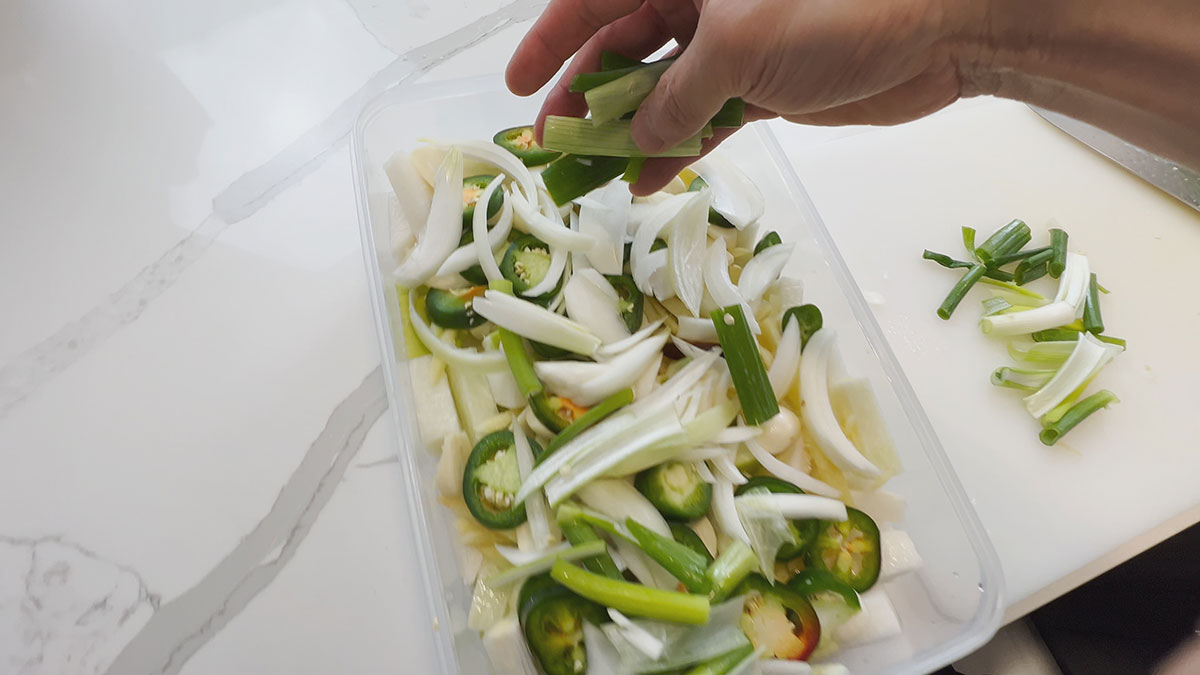
To kick it up a notch, we will also infuse the kimchi with several aromatics like ginger, garlic, jalapeno, onion, and scallion. There are actually two ways to go about these: Chopping them or placing them in a bag.
The easiest route is to just chop these vegetables and add them directly to the radish. They are also great when fermented. However, if you want to isolate it and have cleaner radish kimchi, chop these aromatics in half, place them in a teabag, and add them to the container to infuse. This way, you’ll only pick up the radish when it’s ready to go.
Some people like to add Korean pear or fuji apple to give natural sweetness to the kimchi.
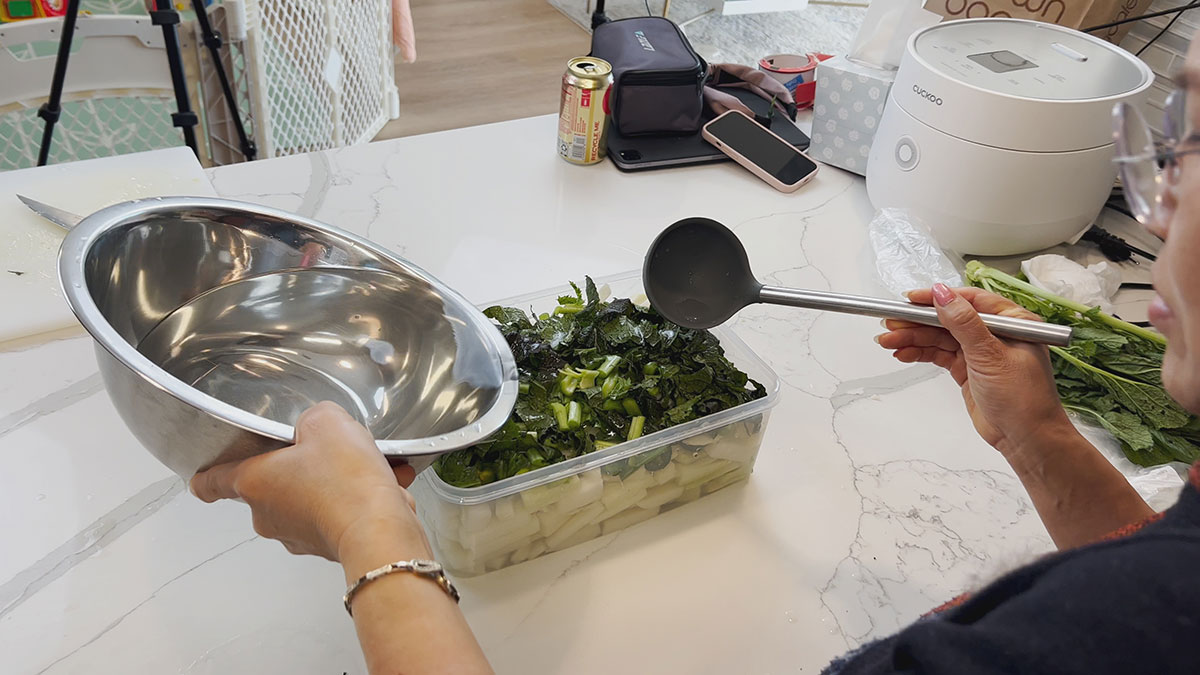
That’s it! It’s as simple as chopping the radish, salting it, and preparing the brine and other vegetables. You’ll then combine it all in a kimchi container or a kimchi jar.
The brine may turn out a bit too salty at this point, but you have to trust the process. While fermenting, the radish will continue to water down and will result in a perfectly balanced sweet, sour, and refreshing broth.
How to Ferment and Serve Dongchimi?
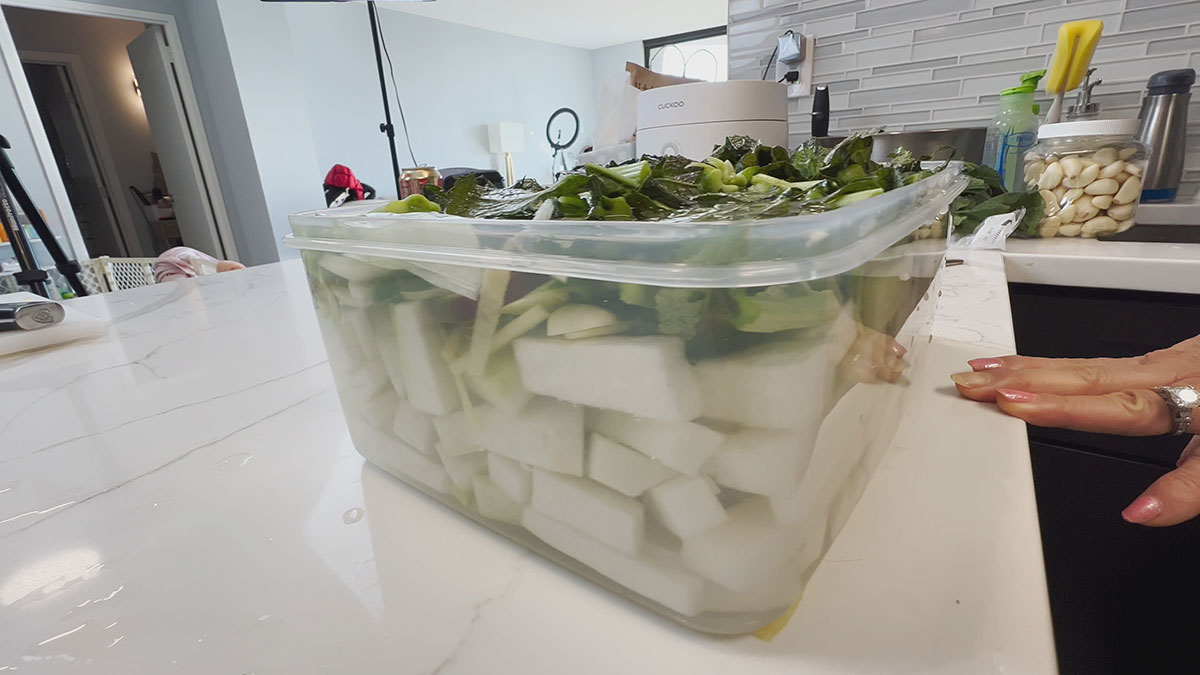
Leave the Water Kimchi at room (not warm or hot) temperature for 5 days. If it’s winter and a bit cold, then leave it to ferment for 10 days. In the first few days, you will see bubbles coming up but that simply means that it is actively fermenting.
As days go by, do taste your kimchi. If the sourness is enough for you, place it in the fridge to slow down the process.
You can then serve this as a side dish in your Korean BBQ or make a Dongchimi Cold Noodle Soup. The broth produced by dongchimi is so refreshing especially when served cold!
This kimchi recipe will literally last you for months and you can even add more radish when it runs out!
Other side dishes you might like:
- Sweet and Sour Seaweed Salad
- Soy-based Burdock Root
- Fishcake Stir-fry
- Radish Kimchi
- Spicy Radish Salad
Make sure to leave a rating, a comment, or tag me on Facebook, Instagram, or Tiktok when you chop them up! Yeobosayo!
Easy Dongchimi (Water Kimchi)
Equipment
- Kimchi Container
Ingredients
- Korean Radish Chopped to thick matchstick sizes
- Sea Salt
- Ginger Sliced to thin matchsticks
- Garlic Sliced thinly
- 2 pcs Jalapeno or Red Pepper Chopped
- 1/2 pc Onion Sliced thinly
- 2 stalks Scallions Cut lengthwise and sliced to 1-inch pieces
- Mustard Leaves Chopped to 1-inch pieces
Kimchi Brine
- 2.5 liter Drinking Water
- 1 1/2-2 handful Sea Salt
- 1 tsp New Sugar
Instructions
- Prepare the radish.
- In a bowl or container, layer radish, and sea salt alternately so that you cover every piece with radish. Set aside for 5 minutes. Do not wash after.
- Meanwhile, prepare the aromatics. You can either chop them and add directly to the radish or place them in a tea bag to infuse.
- Once they are combined in a fermenting jar or container, in a separate bowl, make the brine by mixing water, salt, and new sugar. Mix until everything is dissolved.
- Taste the brine and it should be on the tasty side. Add more salt as needed.
- Combine the brine and the vegetables and make sure everything is soaked well.
- Cover and let ferment at room temperature for 5 days, or if winter and cold, let ferment for 10 days.
- Taste as the days go by and once the sourness is to your liking, place them in the fridge to slow down the process.
- Serve as a side dish or as a cold noodle soup!
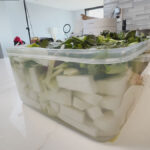


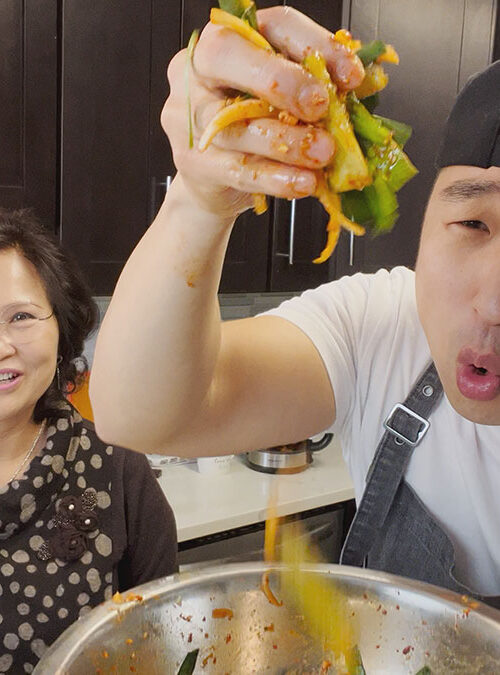


Leave a Reply